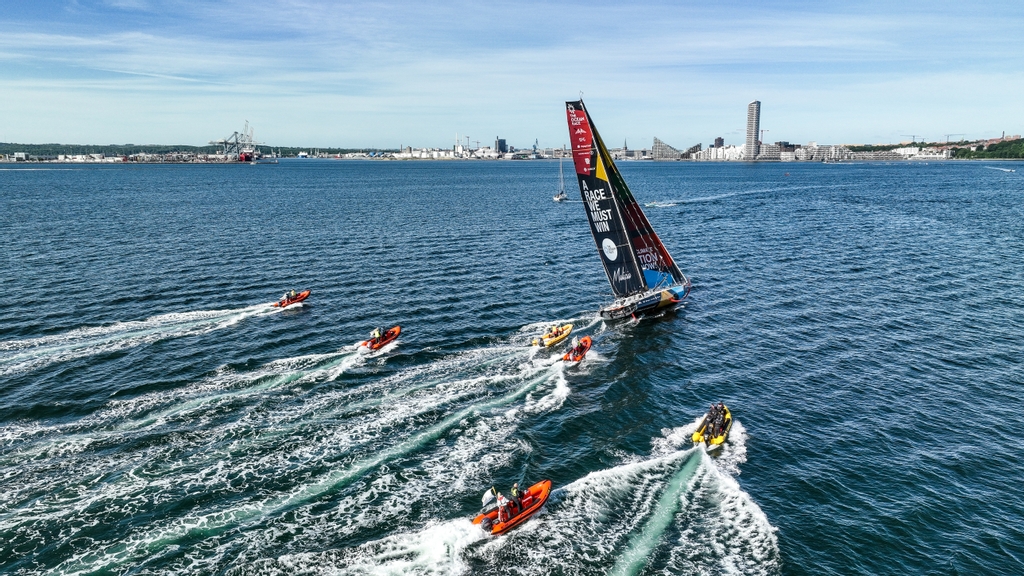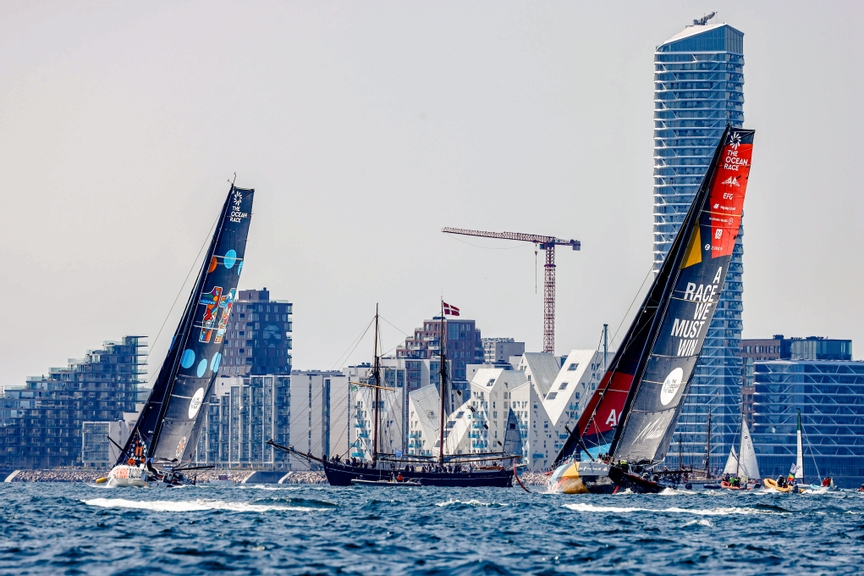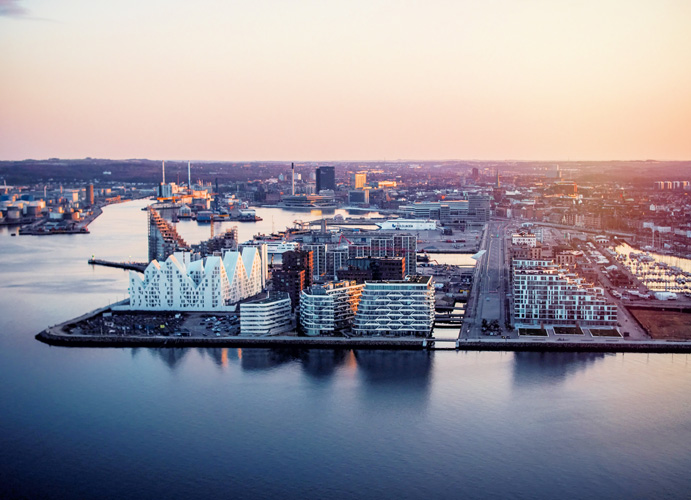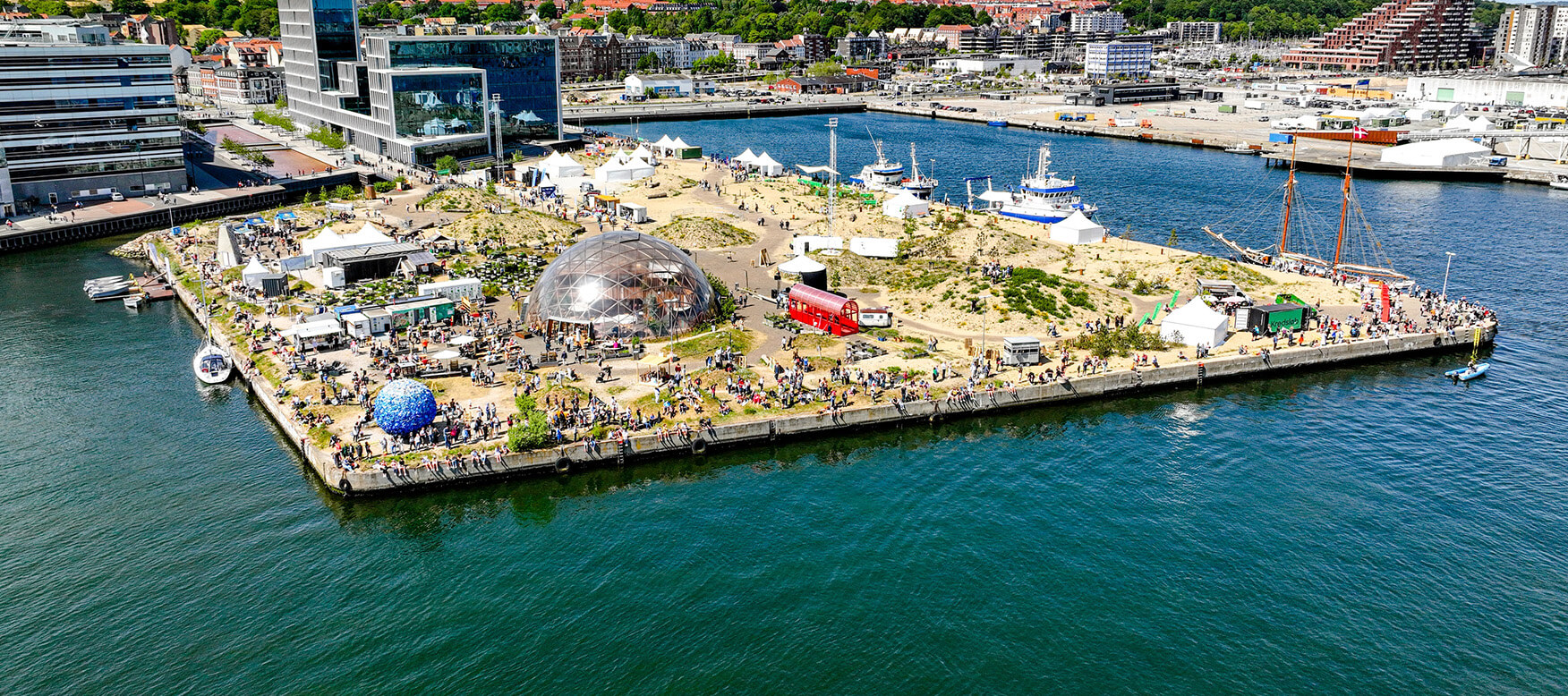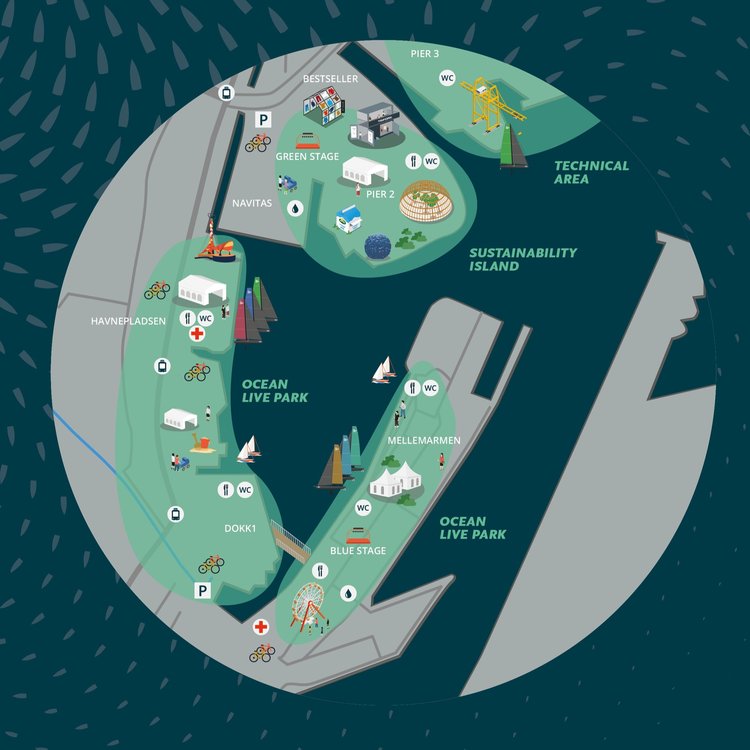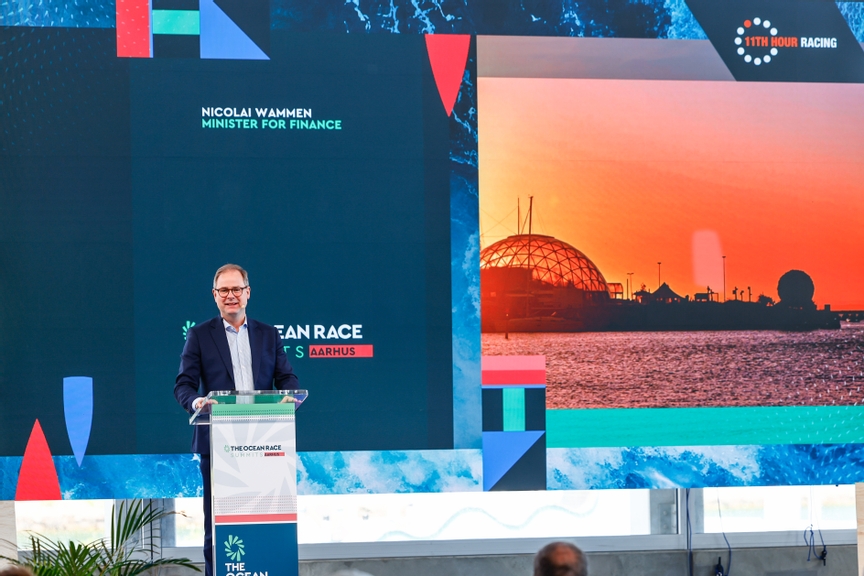Sustainability in action
Known as “the city of smiles”, Aarhus is Denmark’s second largest city and was the first Danish host city for the 2022- 23 edition, welcoming the fleet at the end of Leg 5 after a gruelling transatlantic crossing from Newport.
10 July 2023
Advertisement
Aarhus sits on the eastern shore of Jutland in the Kattegat Sea approximately 187 kilometres north west of the country’s capital, Copenhagen.
The city’s first involvement with The Ocean Race came during the 2017–18 edition when the fleet took part in a popular ‘fly-by’ of the port on the way from Gothenburg, Sweden to The Hague in the Netherlands on the final leg of the race. The fly by attracted tens of thousands of fans to cheer each of the six-boat fleet around a turning mark in the city’s inner harbour.
Founded as a Viking settlement in the eighth century and originally called Aros (“River Mouth”), Aarhus is now the largest centre for trade, services, industry, and tourism in Jutland and hosts Denmark’s largest container port. Known around the world for its cultural diversity, Aarhus is at the cultural and economic core of the region, as well as being home to Scandinavia’s largest University.
Advertisement
The city was the European Capital of Culture in 2017 and has hosted events such as the Hempel Sailing World Championship in 2018 and The Tall Ships Races in 2019.
Aarhus’s attractions are easily explored on foot or bicycle and barely 15 minutes away there is either a forest or a beach. Amongst the city’s attractions are: the ARoS contemporary art museum – whose rainbow-coloured roof installation can be seen from all over town – the gobsmacking redevelopment of Godsbanen, an old goods station turned cultural centre; and the mediaeval streets of the Latin Quarter.
Beyond all that, the city is filled with modern bars, cafes and restaurants, many of which showcase new Nordic cuisine – including a number of three Michelin-starred restaurants.
Aarhus was recently ranked third on the index of the world’s most sustainable tourist destinations on ’The Global Destination Sustainability Index’ with a particular focus on events and conferences.
In partnership with The Ocean Race, a number of educational programs were developed for school students in the 2022–23 school curriculum, focusing on sustainability and sailing, specifically with The Ocean Race’s theme of “Racing with Purpose”.
Practising what it preaches, the streets in central Aarhus are fully pedestrian-friendly, and there are cycle paths through the city and out to the Marselisborg woods, the Deer Park and local beaches. By bike, within 15 minutes you can be at the beach, at the harbour or in the forest.
The AarhusCARD offers free transport by bus and the Letbanen (Denmark’s first Light Railway) all over Aarhus and the surrounding Central Denmark Region, including some local trains and airport shuttles to and from Aarhus and Billund Airports. It also offers free admission to more than 25 museums, attractions and activities in and around the city and discounts on shopping.
The Aarhus Docklands, venue for The Ocean Race stopover in June 2023, was developed in a process that began in 1997 when the city council adopted the master plan for the expansion of the Port of Aarhus (the industrial harbour) towards the east.
The vision of the area has been to create coherence between the city and bay. Furthermore, it has been a priority to secure a mixed demography. Thus, it became a requirement that at least 25 percent of the residentials in the area, will be “social housing”, ensuring a solely cost-related and thereby comparatively low rent.
Sustainable aspects have played a big role in the construction of several building in Aarhus Ø. “Havnehusene” are for example, equipped with photovoltaics, geothermal energy for heating and a big variety of energy- and water saving devices indoors, making them very effective.
Visitors and locals can swim or have a sauna at the world’s largest sea water pool, the Harbour Bath, designed by architect Bjarke Ingells and built from sustainable Swedish pine.
During the The Ocean Race stopover from 29 May to 8 June, event organisers showcased the region’s sustainable solutions including waste separation, renewable energy and reducing plastic waste.
Aarhus established “Sustainability Island” as part of the Ocean Live Park where exhibitors and entrepreneurs demonstrated ways to create a more sustainable world.
A green experience island, Sustainability Island invited visitors to experience “various sustainability projects in exciting and inspiring ways through play and learning”. Innovative exhibitors, contractors, students, businesses, partners were able to show their suggestions for solutions that demonstrated “how the world goals can become every day Goals”.
Around 1,000 students visited the venue each day on school days where they got involved in a wide range of workshops such as waste and food sorting, safety at sea and building mini boats.
“I really hope that they have inspired each other to change,” said Rasmus Hørsted Jensen, sustainability manager at The Ocean Race in Aarhus and co-founder of WorldPerfect.
“We think we have a relationship with the ocean but I think we lost it at some point. I like The Ocean Race as a global entity to find a way to get a new relationship with the ocean because then you want to protect it.”
On 1 June, speaking at The Ocean Race Summit in Aarhus, Denmark’s Finance Minister, Nicolai Halby Wammen announced that the Danish Government will propose a law on nature and biodiversity with a target to protect 20 percent of the ocean and strictly protect 10 percent of the ocean.
“I am very proud to say that the Danish Government will propose a law on nature and biodiversity and we have set a target to protect 20 percent of the ocean, and strictly protect 10 percent of the ocean, meaning that these areas will become essentially undisturbed from human presence.”
“This is a very important step which I hope others will follow, because it is very good to speak and dream about how to protect the ocean, but it is not enough: if we are to make a real difference, if we are to make real change, if we are to protect what we love and what we cherish, real action is needed,” he said.
“As humans, we are here for one brief shining moment, while the ocean has always been here and will remain here. We have not been very good at protecting it, which is something that the city and its people take very seriously,” continued the former mayor of the Danish city (2006–2011).
“Let’s fight for the ocean as much as the ocean fights for us,” he said.
The event, held at Aarhus International Sailing Centre during the stopover of the round-the-world sailing race, gathered together over 150 government, civil society and private sector representatives to explore ways in which the international community can come together to protect and regenerate the ocean and recognise its intrinsic rights.
The Summit analysed the power of sailing to influence positive change, the close intersection of science, shipping and sailing, the key role of youth in ocean action, the change needed for a more sustainable fashion industry, and featured innovative solutions.
Advertisement
Advertisement
Advertisement
French squad revealed


